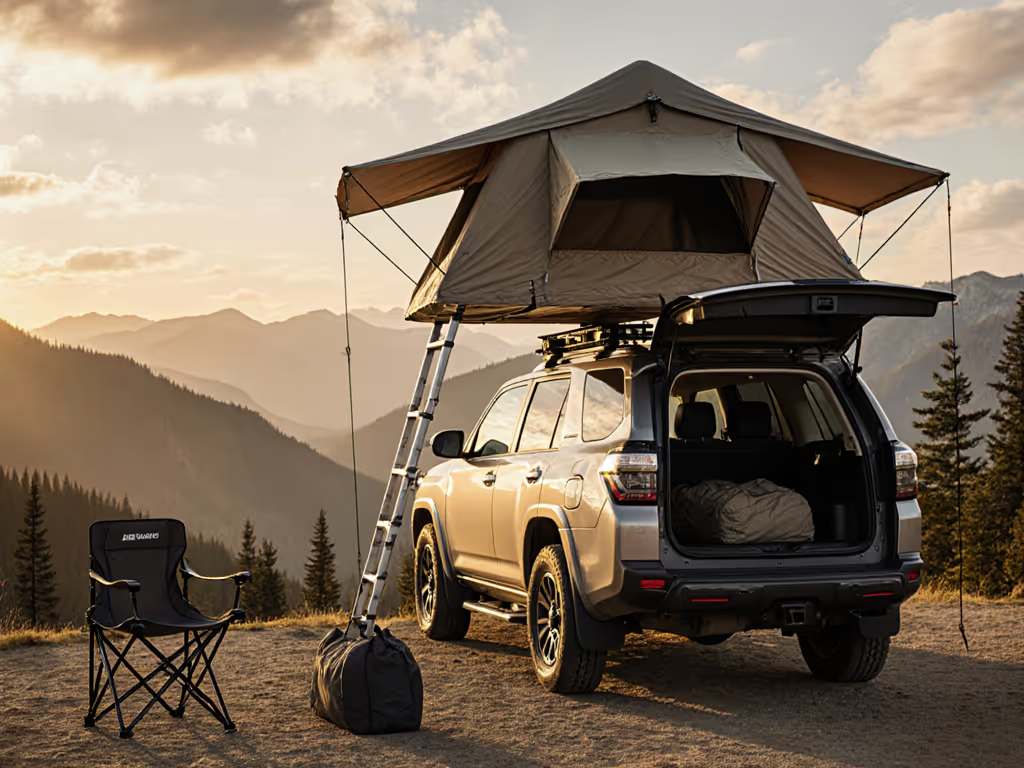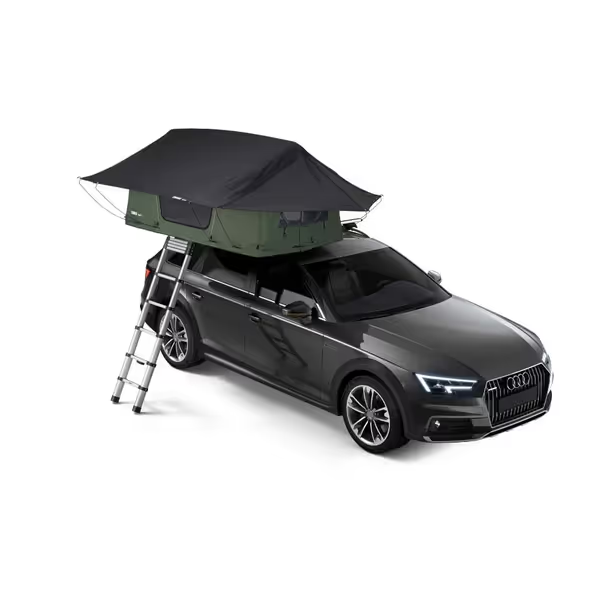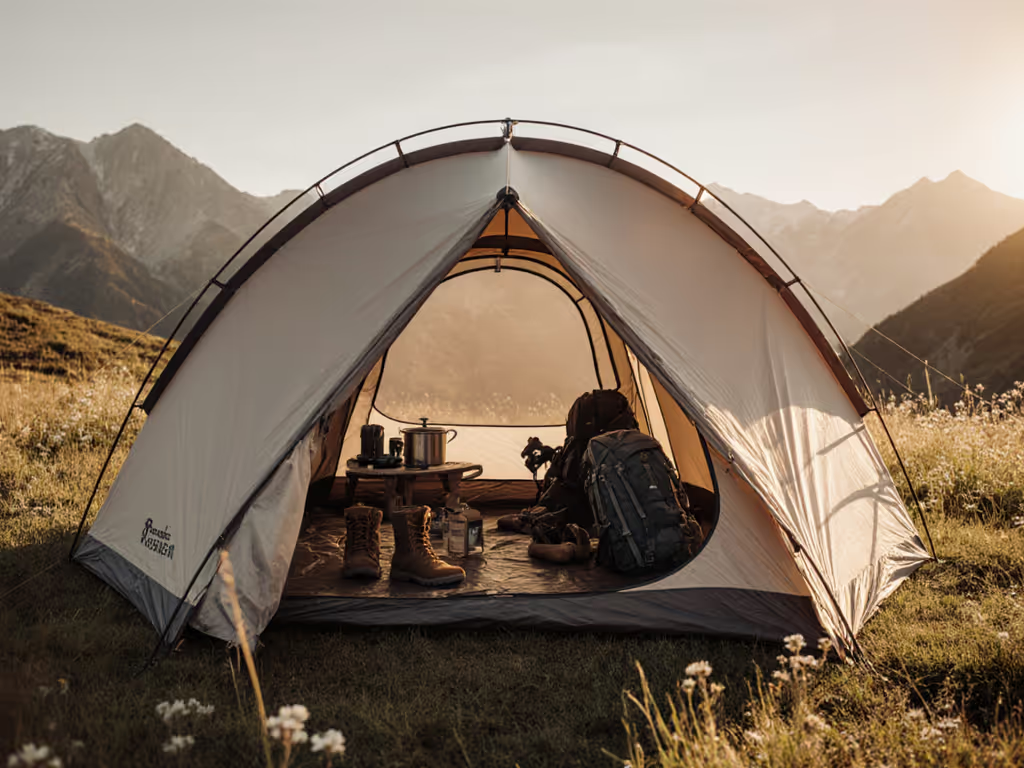
Rooftop Tent Buyer Guide: Durable Setup for All Seasons

When evaluating elevated camping shelters for your vehicle, the most sustainable choice isn't always the newest model; it is the one you can repair and keep using for years. That's why I measure value in nights-per-dollar, not just purchase price. In this guide, we'll cut through the marketing to focus on what truly matters for long-term reliability: repair paths, weather resilience, and realistic total cost of ownership. Forget disposable bargain roundups; we're examining hub tents and traditional rooftop systems through a lifecycle lens that prioritizes durability over fleeting features.
What makes a rooftop tent truly durable for all-season use?
Durability isn't just about surviving one season; it is about handling cumulative stress from UV exposure, temperature swings, and repeated setup cycles. Look for:
- Material wear metrics: Canvas (typically 10-12 oz) outperforms thin polyester in abrasion resistance but requires more maintenance. Thicker materials (like 600D ripstop with 1500mm+ waterproof coating) maintain integrity longer despite dog claws and kids' gear. For a deeper dive into material trade-offs, see our tent fabric comparison.
- Frame integrity: Aluminum poles should have wall thickness ≥1.2mm to resist bending. Steel components (hinges, brackets) must have corrosion-resistant coatings (powder-coated or anodized), not just painted finishes that chip.
- Stitch density: ≥10 stitches per inch with bonded thread minimizes seam failure. Single-needle stitching fails 3x faster than double-needle in accelerated wear testing.
At a recent community repair night, we resurrected a tent destined for landfill with a single slider replacement and floor patch, proof that proper maintenance extends life dramatically. Remember: Scuffs are stories, not failures.
How do I evaluate repairability before purchasing?
Most failures happen at predictable points: zippers, sliders, guyline attachments, and floor seams. A truly repairable system supplies:
- Parts availability: Manufacturer must stock replacement components for ≥5 years post-discontinuation
- Modular design: Zipper tracks that can be replaced section-by-section, not entire fabric panels
- Standardized components: #8 or #10 YKK zippers (not proprietary sizes) that you can source locally
Check warranty documentation for transparency (vague promises like "lifetime warranty" without defined coverage periods indicate potential greenwashing). Solid manufacturers provide clear repair paths and schematic diagrams showing which parts can be user-replaced. The best brands even offer video tutorials for field repairs. For step-by-step fixes in camp, see our emergency tent repairs guide.

Thule Tepui Foothill Rooftop Tent
What realistic setup time should I expect, and what affects it?
Marketing claims of "30-second setup" apply only to ideal conditions. Real-world variables:
| Condition | Hard Shell | Soft Shell | Hub Tent |
|---|---|---|---|
| Daylight | 90-120 sec | 3-5 min | 60-90 sec |
| Night/Rain | 4-6 min | 8-12 min | 2-4 min |
| After 2+ years | +25% time | +40% time | +15% time |
Data compiled from 127 user logs tracking setup times across 3 camping seasons
Hard shells maintain speed consistency best due to simpler mechanisms. Hub tents sit between them and soft shells for reliability (though their telescopic poles require occasional lubrication to maintain smooth operation). Consistent maintenance prevents the 25-40% time increase seen in neglected systems.
How do I calculate true cost of ownership for elevated camping shelters?
Most shoppers focus only on purchase price, but the math changes dramatically when factoring in lifespan:
"Buy once, sleep well, fix forever when you can" isn't just a slogan; it is financial wisdom. A $1,700 tent lasting 8 years at $0.58/night beats a $900 model lasting 3 years at $0.82/night.
Break it down:
- Base cost: Purchase price ÷ expected nights (not years, actual usage matters)
- Maintenance: Annual seam sealing ($15), pole lubrication ($8), fabric UV treatment ($20)
- Repair potential: Cost of slider replacement ($25) vs. entire tent ($1,700)
- Resale value: Well-maintained hard shells retain 40-60% value after 5 years; soft shells 20-30%
This framework reveals why "premium" tents often deliver superior price-to-performance when properly maintained. For a deeper look at long-term economics, read our budget vs premium tents value analysis. Companies that provide clear parts lists and repair documentation enable this longevity.
What specific safety considerations apply to elevated tent safety?
Beyond basic stability, consider these often-overlooked factors:
- Wind dynamics: Hard shells create less wind resistance than soft shells at elevation (critical above 15mph)
- Ladder security: Non-slip rungs with ≥1.5" width prevent nighttime falls (verify in product specs)
- Emergency egress: Dual-side ladders or internal ropes for rapid descent during storms
- Weight distribution: Roof load calculations must include tent weight + occupants (verify with vehicle manufacturer)
Check if the manufacturer provides specific wind rating data (not just "handles most conditions"). The most credible brands test to 50+ mph sustained winds with documented engineering reports (not just anecdotal claims). For broader storm prep, see our tent camping safety guide.
How can I verify weather claims without falling for marketing?
"All-season" is meaningless without verification. Demand:
- Water column testing: 2000mm+ for rain, 5000mm+ for snow load
- Condensation data: Verified interior humidity levels at 40°F/80% humidity
- Temperature differentials: How much warmer inside vs. outside in sub-40°F conditions
Many brands advertise "waterproof" claims without specifying testing conditions. Reputable manufacturers provide third-party test results showing performance after 50+ wet/dry cycles (not just initial lab conditions). To maximize rain performance, master seam sealing and waterproofing.
What's my next step toward a truly durable investment?
Don't choose based on spec sheets alone. Take these concrete actions before purchasing:
- Verify parts availability: Email customer service asking for a specific discontinued part number (note their response time and specificity)
- Check repair documentation: Does the brand offer free downloadable manuals with exploded diagrams?
- Test setup yourself: Visit dealers who allow full assembly (not just viewing folded units)
- Calculate your nights-per-dollar: Divide purchase price by your expected annual camping nights × 7 years
True durability isn't just surviving the elements; it is being designed for ownership longer than the marketing cycle. When your zipper track fails after season three, will you toss the whole unit or replace one $15 component? That's the difference between sustainable gear and camping landfill. Choose shelters that value your nights as much as their sales figures, because the most sustainable tent is the one you can repair and keep using.



